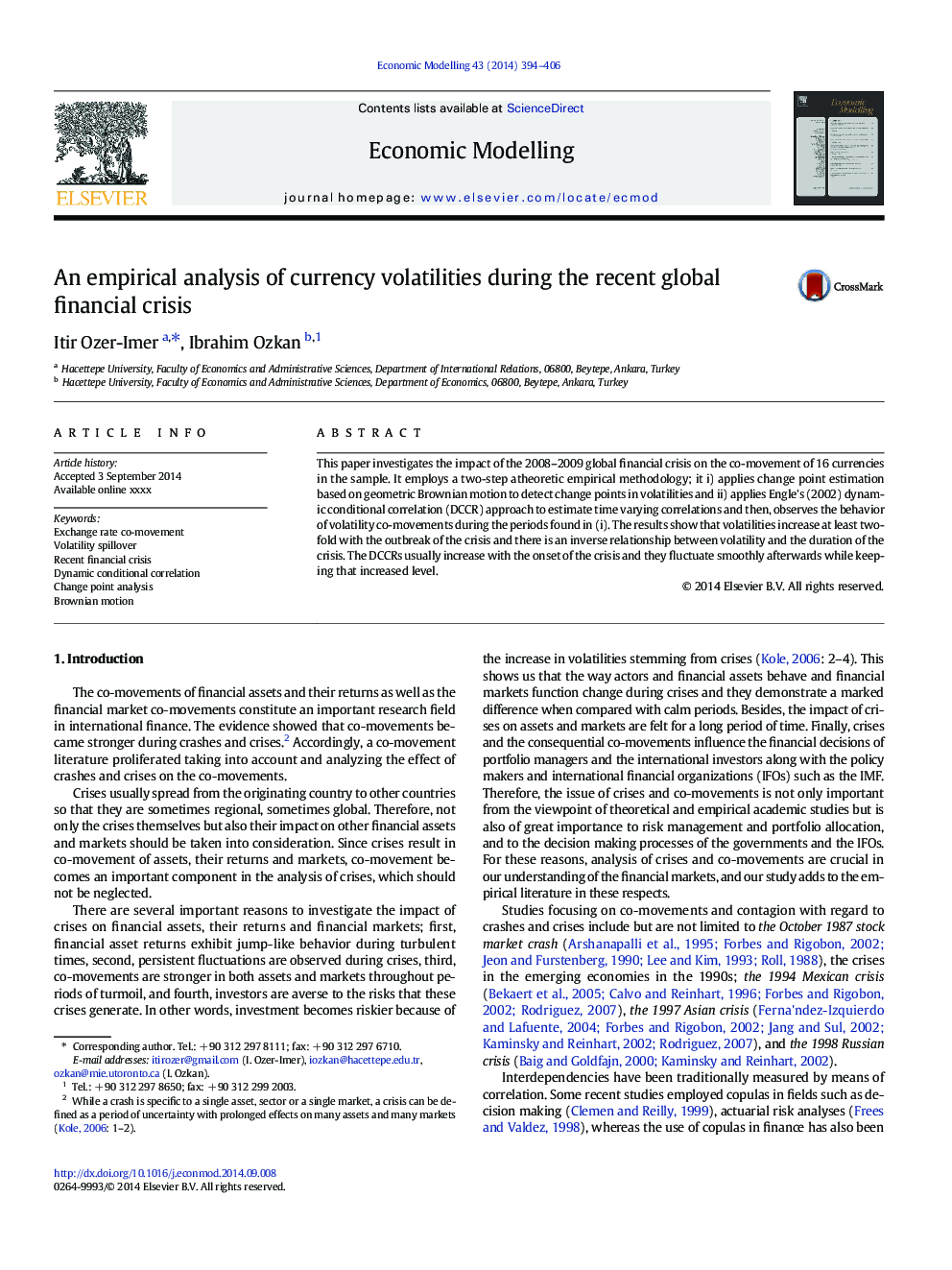| Article ID | Journal | Published Year | Pages | File Type |
|---|---|---|---|---|
| 5054195 | Economic Modelling | 2014 | 13 Pages |
Abstract
This paper investigates the impact of the 2008-2009 global financial crisis on the co-movement of 16 currencies in the sample. It employs a two-step atheoretic empirical methodology; it i) applies change point estimation based on geometric Brownian motion to detect change points in volatilities and ii) applies Engle's (2002) dynamic conditional correlation (DCCR) approach to estimate time varying correlations and then, observes the behavior of volatility co-movements during the periods found in (i). The results show that volatilities increase at least twofold with the outbreak of the crisis and there is an inverse relationship between volatility and the duration of the crisis. The DCCRs usually increase with the onset of the crisis and they fluctuate smoothly afterwards while keeping that increased level.
Related Topics
Social Sciences and Humanities
Economics, Econometrics and Finance
Economics and Econometrics
Authors
Itir Ozer-Imer, Ibrahim Ozkan,
